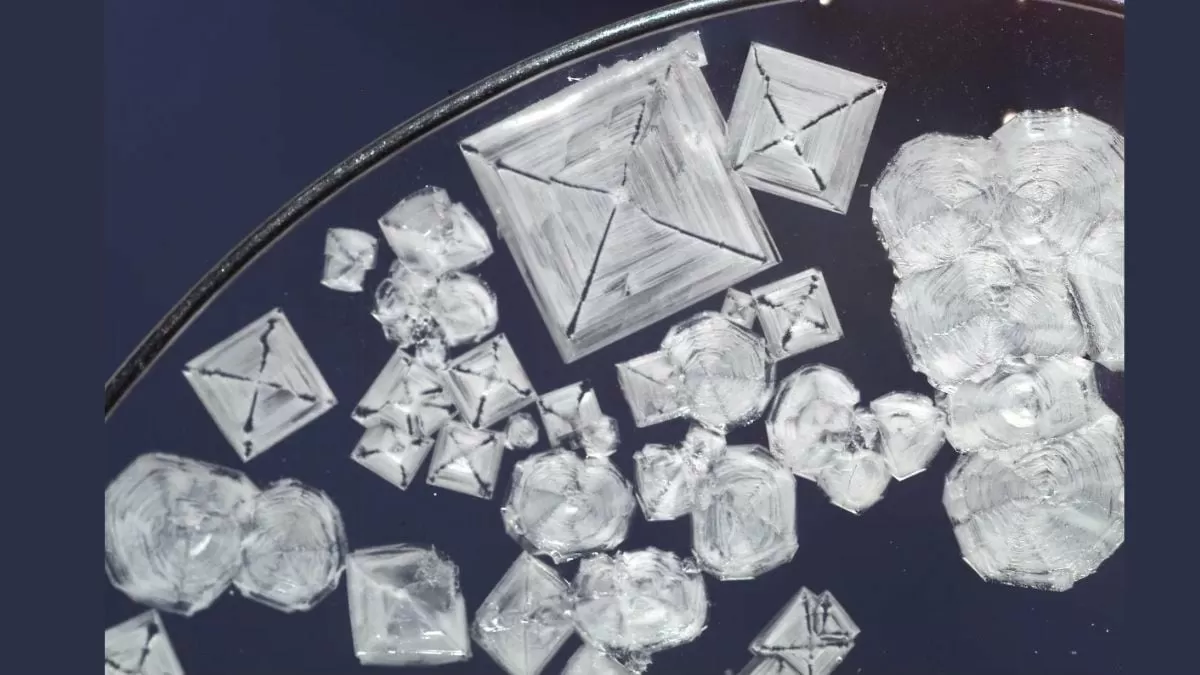NASA has recently made a groundbreaking discovery that has the potential to revolutionize the field of crystal growth. According to the space agency, crystals formed in space are of superior quality compared to those grown on Earth. This is due to the impact of microgravity, which allows for a more controlled and precise formation of crystals.
For years, scientists have been studying the growth of crystals in order to understand their unique properties and potential applications. However, the process of crystal growth on Earth is hindered by the effects of gravity, which can cause irregularities and impurities in the crystal structure. This has limited the potential uses of crystals in various industries, from electronics to medicine.
But thanks to NASA’s research on crystal growth in space, we now have a better understanding of how microgravity can improve the quality of crystals. In a recent study, NASA scientists grew protein crystals on the International Space Station (ISS) and compared them to crystals grown on Earth. The results were astounding – the space-grown crystals were larger, more uniform, and had fewer defects compared to their Earth-grown counterparts.
So, what exactly is microgravity and how does it impact crystal growth? Microgravity is the condition in which objects appear to be weightless due to the absence of gravity. In space, objects and particles are able to move freely without the interference of gravity, allowing for a more controlled and uniform growth of crystals. This results in larger and more perfect crystal structures, making them ideal for various applications.
One of the key benefits of high-quality crystals is their use in electronics. The precise and uniform structure of space-grown crystals makes them perfect for use in electronic devices such as transistors and diodes. These crystals can also be used in lasers, solar cells, and other advanced technologies. With the demand for smaller and more efficient electronic devices increasing, the discovery of space-grown crystals has the potential to revolutionize the industry.
But the benefits of space-grown crystals are not limited to electronics. They also have potential applications in the medical field. Protein crystals, in particular, are of great interest to scientists as they can be used to study the structure and function of proteins, which are essential for understanding diseases and developing new drugs. The improved quality of space-grown protein crystals could lead to more accurate and efficient drug development, ultimately benefiting patients worldwide.
NASA’s research on crystal growth in space has opened up a whole new world of possibilities. The agency is now working on developing new methods and technologies to further enhance the quality of crystals grown in microgravity. This includes the use of 3D printing and advanced materials to create even more precise and complex crystal structures.
The potential of space-grown crystals is truly endless. They have the ability to improve various industries and technologies, leading to advancements that were once thought to be impossible. And with NASA’s continued research and exploration of microgravity, we can expect even more groundbreaking discoveries in the future.
In conclusion, NASA’s recent announcement about the superior quality of crystals grown in space has sparked excitement and hope for a brighter future. The impact of microgravity on crystal growth has opened up new possibilities for various industries and has the potential to improve our daily lives in ways we never thought possible. As we continue to explore and learn from the wonders of space, we can look forward to a world where space-grown crystals play a vital role in shaping our future.

